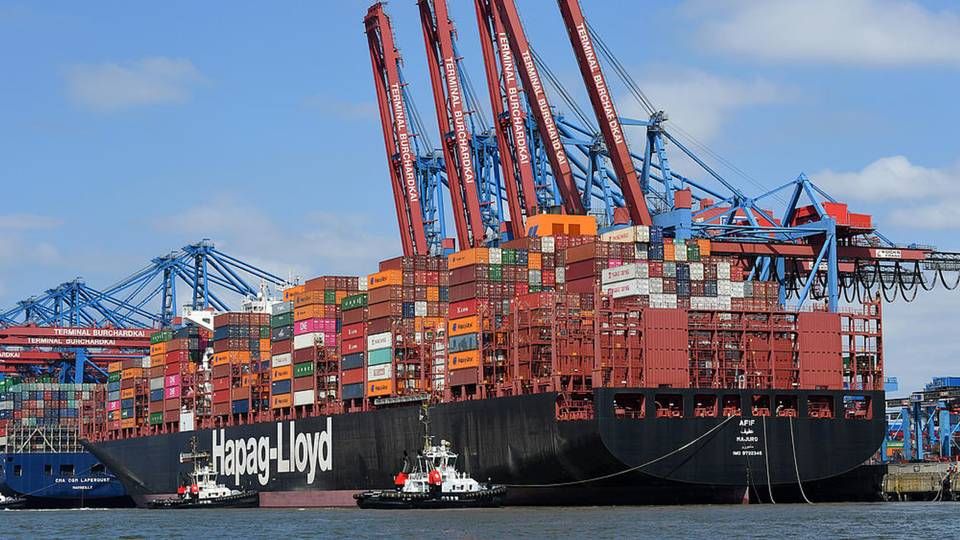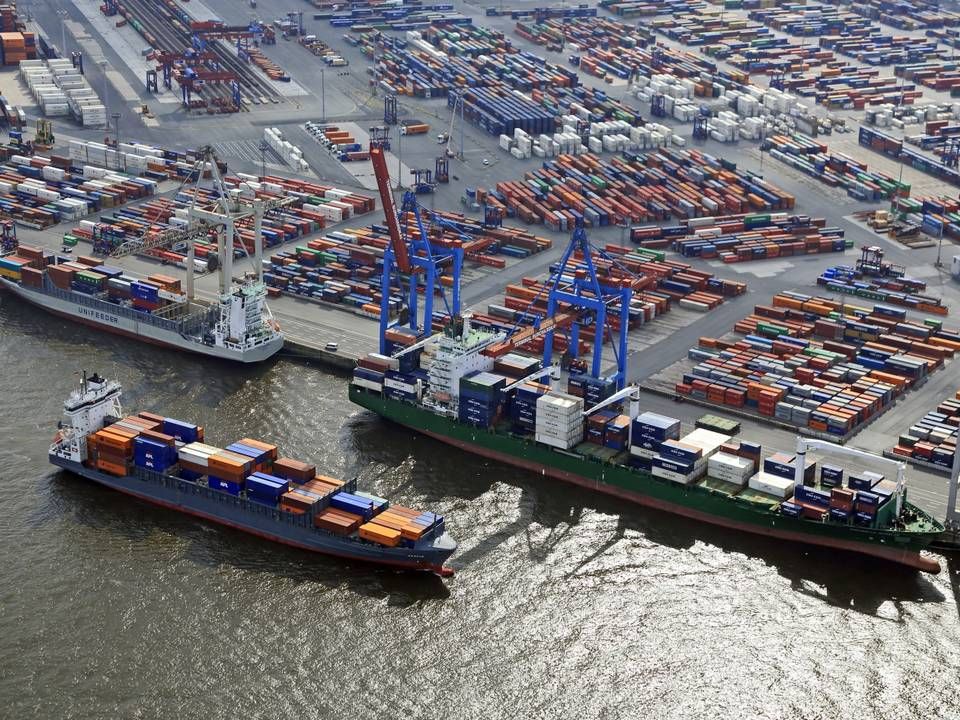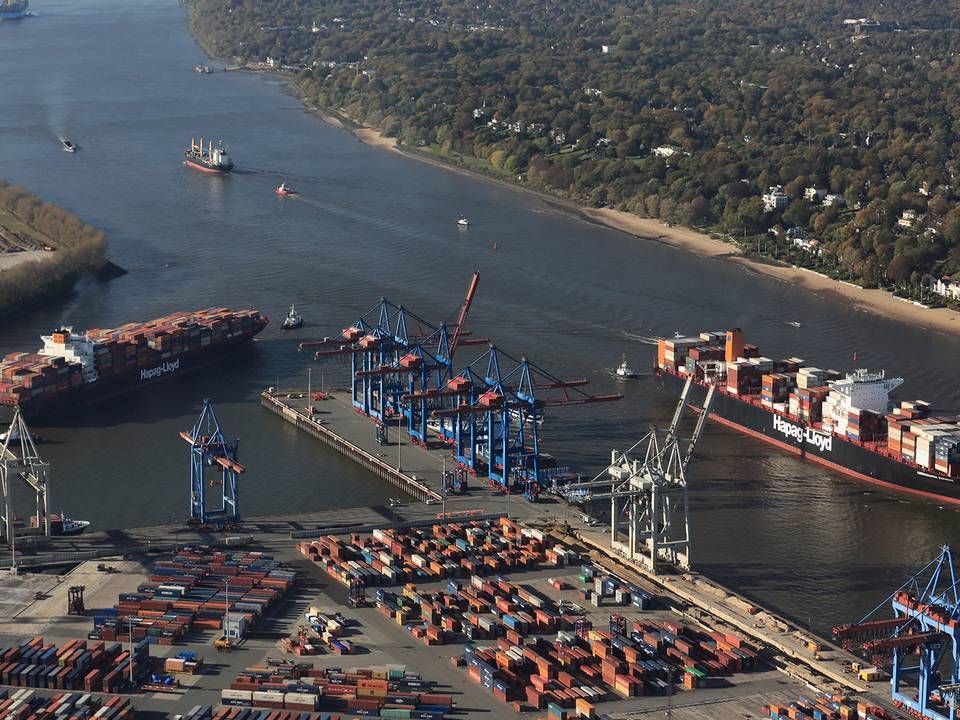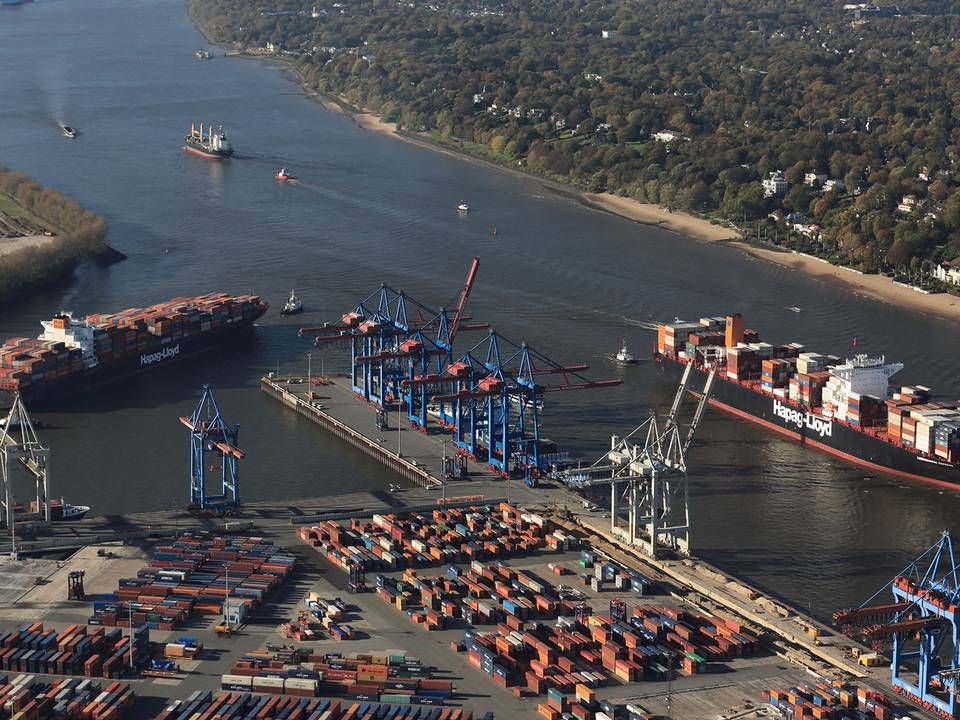One mega-ship requires 3800 trucks and 50 freight trains in Port of Hamburg

HAMBURG
The biggest terminal operator in Hamburg – Hamburger Hafen und Logistik AG, HHLA – hopes that shipping companies will soon stop deploying ever-larger container ships.
The enormous ships, the biggest of which are 400 meters long and have a capacity of 23,000 teu, make it cheaper to move containers. But they also create problems in the ports.
"We have responded to this development in Hamburg with larger cranes and on the nautical side with the deepening and widening of the river Elbe. But the main issue is the hinterland," says Thomas Lütje, sales director at HHLA, which handles the vast majority of containers in Hamburg.
The challenges arise because the biggest ships concentrate the strain on the port during peak times, rather than spreading the same amount of containers out over a longer period.
"We have experienced that every 400 meter vessel creates a demand for 3,800 trucks and 50 trains 48 hours before and after the ship arrives. The market and the volume are growing moderately, but the load during peak times is increasing exponentially," Lütje tells ShippingWatch.
Have ordered more mega-ships
HHLA operates terminals in Hamburg, Ukraine and Estonia, and it also owns rail road company Metrans, which is one of the biggest players in the freight of containers from European ports to the so-called hinterland.
Last year HHLA handled around 6.9 million standard containers in Hamburg, a European hub for containers from China.
The biggest ships of 18,000 teu and above are especially popular on the routes from China to Europe.
Most recently, several of the world's largest container shipping lines have ordered new ships of 23,000 teu, including MSC and CMA CGM, while Germany's Hapag-Lloyd has hinted at similar plans.
"It will continue to be the trend on the Far East services. We guess that within the next five years, 70 percent of the vessels on these routes will be 400 meters," says HHLA's Lütje.
This means that there will be even more pressure on the infrastructure in and around the Port of Hamburg. And the shipping sector should not expect to get help from German or European politicians to build better roads and railroads that can handle the hinterland traffic from the mega-ships.
"Focus is on maintenance, and it will be difficult to convince politicians that they have to use taxpayers' money to invest in infrastructure to help the liner companies with bigger vessels," Lütje tells ShippingWatch.
Must get better at cooperating
The only solutions is to use the existing capacity better by strengthening the cooperation between all the actors and the port.
This should be done, among other things, through improved collaboration with shipping companies, terminals and the companies in charge of the cargo's further transport. Here there is still potential to improve, and HHLA is in talks with several players to solve the issue.
The sales director, who has worked at Hapag-Lloyd, declines to speculate about whether the ships could get even bigger.
"But I do know that the limit will not be the expertise of a South Korean engineer. The limit will be the hinterland," he says, adding that for instance US ports can currently not handle ships of over 18,000 teu.
"So the honest answer is, we do not know, but the emotional answer is, we really hope that the limit has been reached. And if not, we have to cope with it and find new solutions for our customers," says Lütje.
English Edit: Daniel Logan Berg-Munch
Port of Hamburg handled more containers in 2019
Port of Hamburg invests big-time in onshore electricity for container ships
Related articles
Port of Hamburg handled more containers in 2019
For subscribers
Port of Hamburg grew in the first half of the year
For subscribers



















